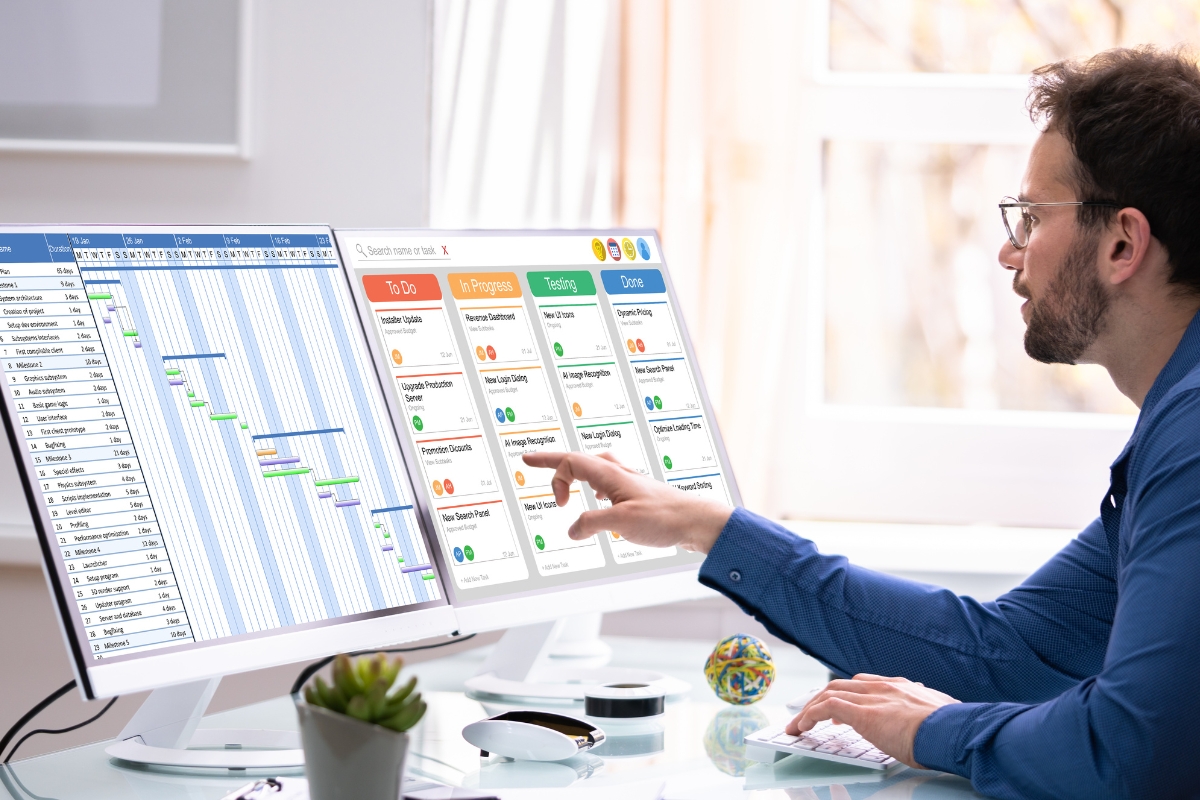In the fast-paced world of content creation, keeping your ideas organized and your strategy on track can feel like trying to juggle a dozen balls at once. But fear not! With the right tools and know-how, mastering your content calendar can turn chaos into clarity and catapult your success.
Whether you’re a seasoned content creator or just dipping your toes into the water, this guide is your roadmap to content calendar mastery. Get ready for a step-by-step journey filled with practical tips, creative insights, and plenty of ah-ha moments. Say goodbye to the overwhelm and hello to streamlined success!
Plan, Execute, Succeed: How to Master the Art of Content Calendar Creation
The Fundamentals of Content Calendars: Building a Strong Foundation

Before we dive into the nitty-gritty details of content calendar mastery, it’s essential to establish a strong foundation. A content calendar is more than just a simple schedule; it’s a strategic tool that helps you plan, organize, and execute your content with precision. To build this foundation, there are a few key elements you need to consider. You’ll need to start things off with a content mapping strategy:
First and foremost, you need to define your target audience. Understanding who you’re creating content for will shape the tone, style, and topics of your posts. Conduct thorough research to identify their needs, preferences, and pain points so that you can tailor your content accordingly.
Next, determine your overall content goals and objectives. What do you hope to achieve with your content? Are you looking to increase brand awareness, drive website traffic, or generate leads? Setting clear goals will guide your content strategy and help measure its success.
Lastly, establish guidelines for your brand’s voice and messaging. Consistency is key when it comes to building brand identity. Define the tone, language style, and key messages that align with your brand values so that all team members involved in content creation can adhere to these guidelines.
Setting Clear Goals and Objectives: Defining Your Content Strategy

A well-defined content strategy is crucial for achieving success in the digital landscape. It serves as a roadmap that guides every aspect of your content creation process. To define an effective strategy:
Start by conducting a thorough analysis of your current digital presence. Evaluate what has worked well in the past and identify areas for improvement.
Set specific goals for each piece of content you create. Whether it’s increasing engagement on social media or driving traffic to specific landing pages on your website, having clear objectives will help you measure the success of your content.
Center your brand on the pivotal themes and subjects that strike a chord with your audience. These chosen themes form the basis of your content schedule, guaranteeing that each content piece you produce bolsters your overarching strategy.
Remember to keep your goals and objectives realistic and achievable. It’s better to focus on quality over quantity, creating valuable content that truly engages your audience rather than churning out mediocre posts just for the sake of consistency.
Choosing the Right Tools: Finding Your Perfect Content Calendar Platform

When it comes to managing your content effectively, having the right tools in place is crucial. Your content calendar serves as the backbone of your content strategy, helping you stay organized and on track with your publishing schedule. Here, we will delve into the process of choosing the perfect content calendar platform to streamline your workflow and boost your productivity.
When selecting a content calendar platform, the first step is to assess your specific needs and requirements. Consider factors such as the size of your team, the complexity of your content strategy, and any integrations you may need with other tools. This initial evaluation will help you narrow down your options and focus on platforms that align with your objectives.
Next, take a closer look at the features offered by different content calendar platforms. Look for key functionalities such as customizable calendar views, drag-and-drop interface, task assignments, deadline reminders, and analytics tracking. These features will not only help you plan and organize your content but also measure its performance and make data-driven decisions.
Integration capabilities are another essential aspect to consider when choosing a content calendar platform. Ensure that the platform can seamlessly integrate with other tools and software you use, such as social media management tools, CMS platforms, and analytics software. This will enable you to create a cohesive workflow and avoid manual data entry and duplication of efforts.
Usability and user experience are also critical factors to keep in mind. Opt for a content calendar platform that is intuitive, easy to navigate, and visually appealing. A user-friendly interface will encourage team collaboration and adoption, ultimately enhancing your content creation process.
Finally, consider the scalability of the platform. As your content strategy evolves and your team grows, you need a platform that can adapt to your changing needs. Choose a content calendar platform that can accommodate future expansion and allow for customization to suit your evolving requirements.
Mapping Out Your Strategy: Establishing Content Categories and Themes

To ensure consistency in your content creation process, it’s essential to establish clear categories and themes within your content calendar. This helps you maintain a balanced mix of topics and ensures that your content aligns with your overall strategy.
Start by brainstorming a list of broad content categories that are relevant to your brand and resonate with your target audience. These categories can be based on different aspects of your business, industry trends, or customer pain points.
Once you have established your categories, break them down into specific themes or subtopics. This will help you generate ideas for individual pieces of content and ensure that each post contributes to the larger narrative.
For example, if you’re a fitness brand, your categories could include nutrition, workouts, and lifestyle tips. Within the nutrition category, you could have themes like healthy recipes, meal planning guides, and nutritional advice for specific dietary needs.
Crafting Compelling Content: Developing Engaging Ideas and Topics

When it comes to mastering your content calendar, the key lies in developing engaging ideas and topics. Your content calendar is the backbone of your content strategy, keeping you organized and on track for success.
- Generating Engaging Ideas: To kickstart the process, begin by brainstorming topics that resonate with your target audience. Consider their pain points, interests, and preferences to craft content that truly captivates them.
- Incorporating Variety: Diversifying your content is crucial to maintain audience interest. Mix up your topics by including how-to guides, listicles, case studies, and opinion pieces to cater to different preferences.
- Aligning with Trends: Stay ahead of the game by incorporating trending topics into your content calendar. Monitor industry news, social media trends, and keyword research to identify popular themes to include in your content strategy.
- Planning for Consistency: Consistency is key when developing engaging content. Create a content calendar that outlines when each piece of content will be published, ensuring a steady stream of fresh ideas for your audience.
- Leveraging Keywords: Integrate relevant keywords into your content to boost visibility and attract organic traffic. Conduct keyword research to identify high-ranking keywords that can be seamlessly incorporated into your topics.
- Engaging Visual Elements: Enhance the appeal of your content by incorporating visual elements such as images, infographics, and videos. Visual content not only captures attention but also aids in conveying your message more effectively.
- Encouraging Interaction: Encourage audience engagement by incorporating interactive elements into your content. Polls, quizzes, and open-ended questions prompt readers to participate, enhancing their overall experience.
Assigning Tasks and Deadlines: Implementing a System for Accountability

To implement a robust system for accountability in your work or team, assigning tasks and deadlines is crucial. When it comes to managing your content calendar effectively, this system becomes even more essential. Ensuring that each task is clearly assigned and deadlines are set can significantly improve productivity and organization.
When working on mastering your content calendar, the first step is to establish a clear structure for task assignment. Each team member should have a designated set of responsibilities within the content calendar. This not only prevents overlaps but also ensures that every aspect of the calendar is covered efficiently.
Assigning tasks based on individual strengths and expertise can enhance the overall quality of the content produced. By recognizing each team member’s skills, you can distribute tasks effectively, leading to a more cohesive and well-rounded content calendar.
Setting deadlines is equally important in the content creation process. Deadlines create a sense of urgency and accountability, motivating team members to work efficiently to meet set timelines. It is advisable to set realistic deadlines that consider the complexity of tasks to avoid unnecessary stress or rushed work.
Moreover, deadlines help in prioritizing tasks within the content calendar. By establishing deadlines for each task, you can create a timeline that outlines when each piece of content should be completed. This level of organization is key to maintaining consistency and meeting publishing schedules.
Implementing a system for accountability through task assignment and deadlines not only streamlines the content creation process but also fosters a sense of responsibility within the team. When everyone is clear about their roles and the associated deadlines, collaboration becomes more effective, leading to a more productive and successful content calendar.
Scheduling with Precision: Optimizing Timing and Frequency of Posts

When it comes to content calendar mastery, one key aspect to focus on is scheduling with precision. By optimizing the timing and frequency of your posts, you can ensure that your content reaches your audience when they are most engaged.
To begin with, it’s essential to analyze your content calendar carefully. Look at your past posts to identify patterns in engagement levels based on the time and day of the week. This data will provide valuable insights into when your audience is most active and receptive to your content.
Once you have a clear understanding of your audience’s behavior, you can start optimizing timing by scheduling your posts to go live during peak engagement hours. This proactive approach ensures that your content is seen by a larger percentage of your followers, increasing the likelihood of interaction and sharing.
In addition to timing, the frequency of posts also plays a crucial role in maintaining audience interest. Striking the right balance between being present enough to stay top of mind and not overwhelming your followers is key. By spacing out your posts strategically, you can maintain a consistent presence without bombarding your audience with too much information.
Another important aspect of scheduling with precision is to leverage tools and analytics to monitor the performance of your posts. By tracking metrics such as likes, shares, and comments, you can gain valuable insights into what type of content resonates most with your audience.
This data-driven approach allows you to refine your content calendar continuously and adapt your posting strategy for optimal results.
Analyzing Performance: Tracking Metrics and Adjusting Strategies

When it comes to mastering your content calendar, analyzing performance is key. Tracking metrics allows you to measure the effectiveness of your strategies and make necessary adjustments for optimal results. By delving into the data provided by these metrics, you can gain valuable insights into what’s working and what’s not, helping you refine your content strategy for better success.
Metrics such as engagement rates, click-through rates, bounce rates, and conversion rates offer a window into how your audience is interacting with your content. By closely monitoring these metrics, you can identify trends, patterns, and areas that may need improvement.
For instance, if you notice a drop in engagement on certain types of content, you can adjust your strategy by focusing more on what resonates with your audience.
Adjusting strategies based on metric analysis is a continuous process. It involves experimenting with different approaches, monitoring the results, and fine-tuning your content calendar accordingly. This iterative process allows you to adapt to changing trends, audience preferences, and market dynamics, ensuring that your content remains relevant and impactful.
Collaboration and Communication: Ensuring Team Alignment and Coordination

To ensure team alignment and coordination, implementing a well-structured content calendar is essential. A content calendar acts as a roadmap, guiding teams on what, when, and how to communicate effectively. It promotes collaboration by providing a centralized platform for everyone to access and contribute to the content planning process.
Team alignment is achieved through a shared understanding of content objectives, timelines, and responsibilities. By utilizing a content calendar, team members can see the bigger picture and align their efforts toward common goals. This transparency fosters a sense of unity and coherence within the team.
Effective communication is the cornerstone of successful collaboration. A content calendar streamlines communication by outlining deadlines, milestones, and content requirements. This clarity reduces misunderstandings and ensures that everyone is on the same page regarding project progress and expectations.
Coordination among team members is facilitated through a content calendar’s ability to assign tasks, track progress, and allocate resources efficiently. With designated timelines and responsibilities, team members can coordinate their efforts seamlessly, reducing duplication of work and maximizing productivity.
Staying Agile: Adapting to Changes and Trends in the Digital Landscape

To master the art of content calendar organization, staying agile is key. Adapting to changes and trends in the digital landscape is crucial for success in content creation.
When working with a content calendar, flexibility is non-negotiable. Updating and revising the calendar regularly allows for seamless adaptation to new trends and changes in the digital landscape. By incorporating feedback and insights, you can refine your content strategy to stay relevant and engaging.
Embracing agility in content creation means being open to experimentation. Testing different types of content, posting frequencies, and timing can help you identify what works best for your audience. By analyzing data and metrics, you can make informed decisions to optimize your content calendar for maximum impact.
In a constantly evolving digital world, it’s essential to keep an eye on emerging trends. By staying informed about industry developments and consumer behavior, you can anticipate changes and adjust your content calendar accordingly. This proactive approach ensures that your content remains fresh, engaging, and in line with current digital trends.
By mastering the art of content calendar organization and staying agile in your approach, you can set yourself up for success in the ever-changing digital landscape. Remember, adaptability is key to staying ahead of the curve and creating content that resonates with your audience.
Conclusion: Mastering Content Calendar Organization for Sustainable Success
Mastering the art of content calendar organization is crucial for achieving sustainable success in the digital realm. By building a strong foundation, setting clear goals and objectives, choosing the right tools, mapping out your strategy, crafting compelling content, assigning tasks and deadlines, scheduling with precision, analyzing performance, ensuring collaboration and communication, and staying agile, you can unlock the true potential of your content creation process.
Ready to master your content calendar and achieve organizational success? Newman Web Solutions is here to guide you every step of the way. Contact our local marketing agency today at (404) 301-9189 or schedule a free marketing strategy session to learn how we can help you streamline your content planning process and drive results for your business. Let’s work together to create a winning content strategy that takes your brand to new heights!





